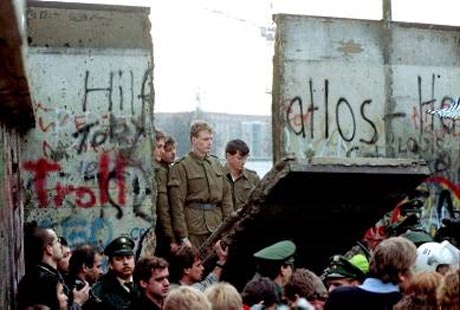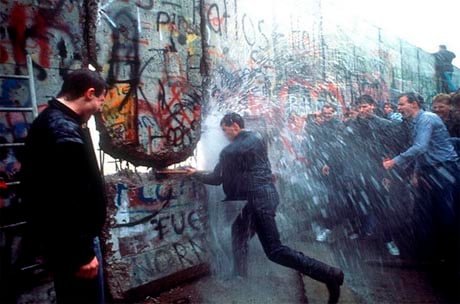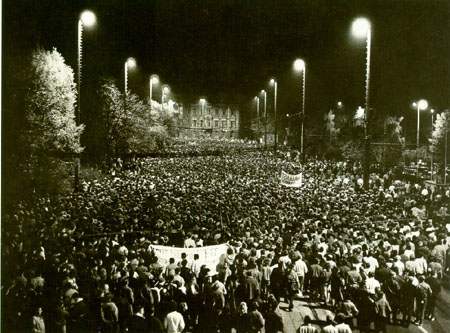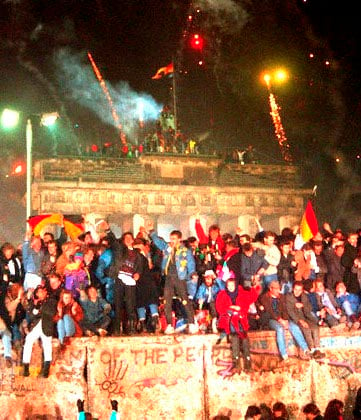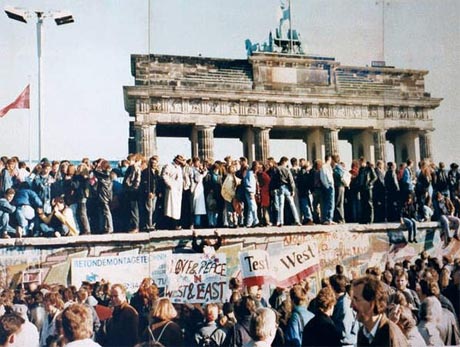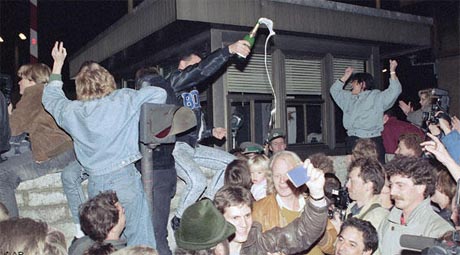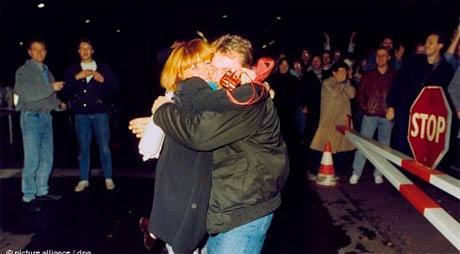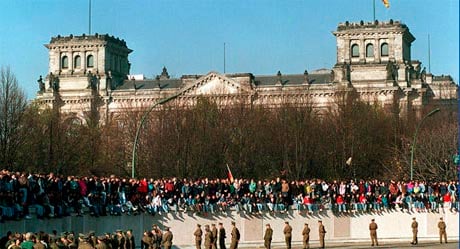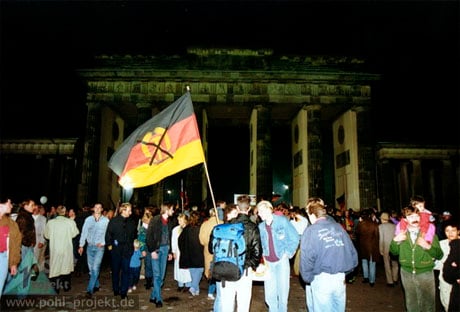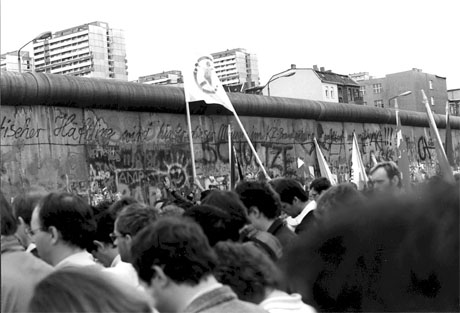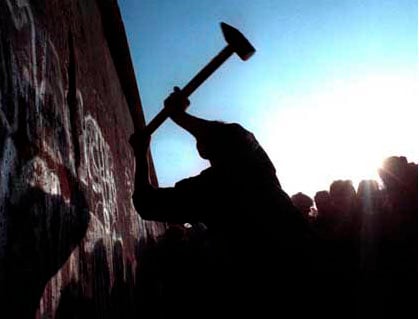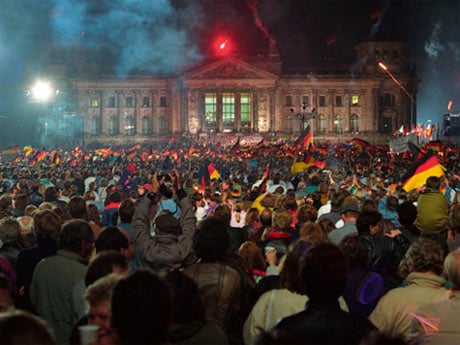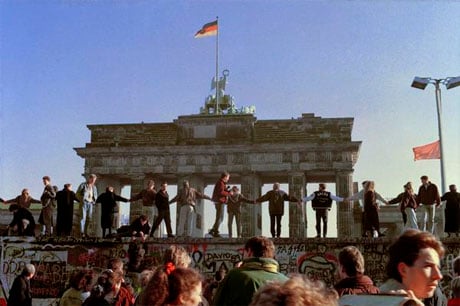Triumph of freedom: 20 years of Berlin Wall fall (Photo, video)
14- 9.11.2009, 10:15
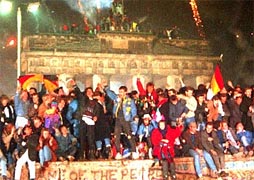
Today the 20th anniversary of the Berlin Wall fall, a historical event after which reunification if Germany and a number “velvet revolutions” in Europe followed, is celebrated.
November 9, 1989 is the one-of-a-kind fortunate day in the cotemporary history of Germany and the entire Europe.
On this day the rotten through system of suppression collapsed, on this day Germany reunited after 40 days. Moreover, on November 9 1989. It was the day when everybody clearly saw what the words “Unity, right and freedom” in the national anthem of Germany mean. It was the triumph of the open society.
Common citizens of Germany achieved that. They took to the grey streets of their cities in their isolated state. Their demands were simple: respect our rights. Peaceful demonstrations that lasted for weeks destroyed all the barbed wire and concrete barriers. It was a triumph of democratic values, on which the Basic Law of the country is founded, «Deutsche Welle» radio informs.
How it happened
Since mid 1980ies the situation in the German Democratic Republic (GDR) becomes less and less peaceful. While in the Soviet Union the perestroika policy was implemented, the leadership of the GDR continues to ignore the imperatives of the time. The opposition is still persecuted. The number of those who decided to leave the GDR as soon as possible, was growing persistently. In middle August 1989 about 600 tourists from the GDR who were on their summer vacation in Hungary, escaped to Austria. Hungarian border guards were not trying to prevent the escape. Moreover, Budapest raised the “iron curtain” and allowed citizens of the GDR to go to the West freely.
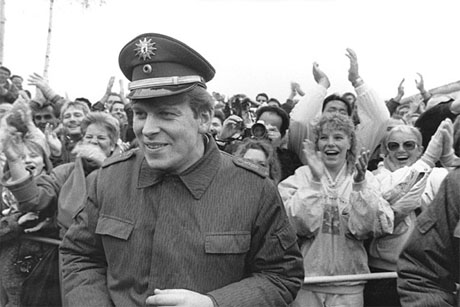
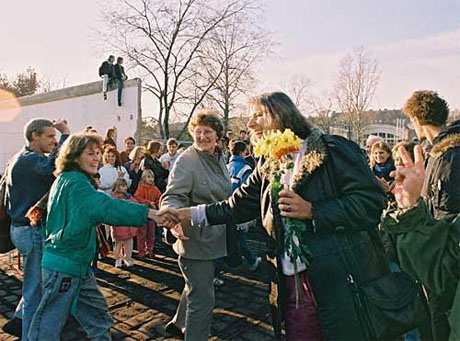
Regime’s change
The leadership of the Socialist Unity Party of Germany tried to stop the flow of tourists to Hungary. After that thousands of GDR citizens trying to go to the West, start to beset diplomatic missions of the in Prague and Warsaw. In late September the head of the Foreign Ministry of the Federal Republic of Germany Hans-Dietrich Genscher goes to Prague. He told to thousands of GDR citizens who gathered near the Embassy of the West Germany that they were told that they were allowed to travel to the West. Refugees who found shelter in West German Embassy in Warsaw were given the same permission.
Celebrations dedicated to the 40th anniversary of foundation of the GDR held in early October 1989 turned into a farce for East German leadership. Paying no attention to the events around, the leader of the party and government Erich Honecker sings praises to the GDR and its social system. And even Mikhail Gorbachev’s calls to reforms in the GDR are ignored. However the inevitability of reforms was clear for most leaders of the GDR as well. On October 18 Erich Honecker had to surrender power to Egon Krenz.
The Wall cracked
The new leadership of the Socialist Unity Party of Germany (SED) promises to carry out reforms. On November 4 on Alexanderplaz in Berlin 400,000 demonstrators gathered. They demanded freedom of expression, government’s resignation and free elections. Unrest starts all over the GDR. In Leipzig the opposition united around the Evangelical Church. On November 6 more than half a million of people took part in the demonstration.
On November 6 it is announced that formalities necessary for making visas to the Federal Republic of Germany are minimized. On the same day many Eastern Germans go to the Berlin Wall to find out the details. Border guards still do not know about the new rules of crossing the border and try to drive back the people, however soon they have to give up and open the way. It was the Berlin Wall’s first rift.
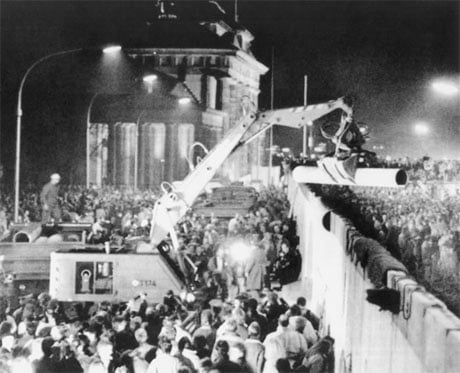
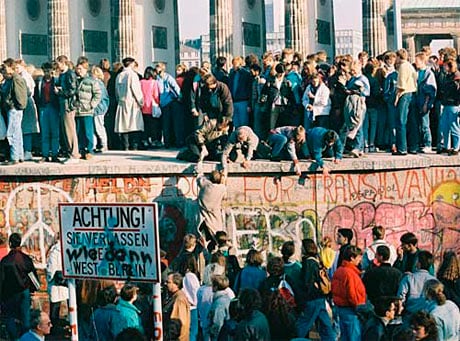
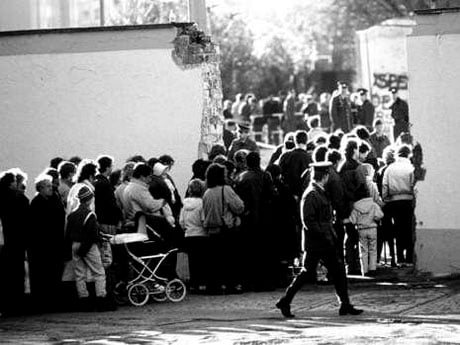
Process of changes irreversible
The new leader of East Germany Hans Modrow stated that the process of changes was irreversible. He promised to reform the political system and the economy of the GDR. Mikhail Gorbachev informed that he greeted reforms, however he underlined that Germany’s reunification was not on the agenda. Meanwhile in late November BRG Chancellor Helmut Kohl offers his plan of overcoming Germany’s division.
The reunification happened quicker than expected. The precondition for creation of the common German state were the parliamentary elections in the GDR in March 1990. Eastern Christian Democrats won by a landslide. Their leader Lothar de Maizière becomes the leader of East German government. In mid May 1990 Kohl and de Maizière signed a treaty on creation a single economic space.
However reunification is not simply an internal affair of Germans. In May 1990 in Bonn talks on Two Plus Four Agreement started between the BRD and the DDR, and the Four Powers which occupied Germany at the end of World War II in Europe: France, the United Kingdom, the United States of America, and the Soviet Union. Joining military blocs by the future united Germany is the issue which caused most controversy.
At the meeting in Zheleznovodsk on June 16, 1990 Kohl and Gorbachev agreed on all the controversial points. Gorbachev agreed the united Germany’s joining the NATO. The term of Soviet troops leaving the GDR is set. In their turn, the BRD government undertook obligations in the economic cooperation with the Soviet Union. This agreement and the final recognition of Poland’s Western border along the Oder-Neisse line were the last steps in the way of reunification.
On October 3, 1990 the GDR joined the area in which the BRD Basic Law served. In other words, Germany became one country.
